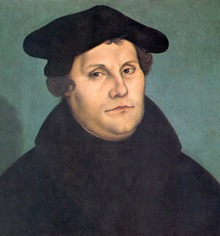This idea by Scott Johnson describes many composers' thinking of music during the second half of the twentieth century. Styles still within "classical" music that dominated during this time were:
- Total Control: an extension of the serial technique, which governed different elements of music, which was often related to mathematical formulas.
- Structures I by Pierre Boulez is an example of this type of music. A formula was created and each aspect of music was put into the formula, creating the music. It sounds very random to the audience, but in fact, is well thought-out by the composer. This kind of music is hard to understand without diving head first into the score for analysis.
- Extended Technique: This was when composers used traditional instruments in non-traditional ways. They pushed the boundaries of what sounds could be created. By using traditional technique for string instruments (ie: plucking, playing over the fingerboard or bridge) and non-traditional technique (ie: playing in between the bridge and tail piece, on the tail piece, and striking the body of the instrument) composers such as Penderecki created a whole new sound world with a string orchestra in his piece Threnody for the Victims of Hiroshima. Another technique that I find very cool is speaking into a piano while holding down the damper pedal. This was done by George Crumb in his piece Ancient Voices of Children. Composers were pushing the boundaries of sound even more to describe different ideas in their music.
- Indeterminacy: This music is often also called "chance music" or "aleatory music". Composers writing in this style only specify certain aspects of the music and leave the rest up to the performer. Of course we all know Cage's piece 4'33". To me, the idea of this piece is more of a statement of how Cage felt about music. Was it really notes from instruments arranged in certain ways, or just the sound or silence that one hears at any time?
- Minimalism: Out of the three previously discussed types of music, minimalism seems to be one that is still often composed. Perhaps it is because Philip Glass continues to lead the way in its composition. However, minimalism is not a new concept. The romantic composer Anton Bruckner was quite minimalist within the structures of his time. Motives and phrases often repeated many times in a row in his music. Perhaps minimalism of the twentieth century is simply a revival of Bruckner's ways.
From this course I have realized that when writing about each 'period' of music history, a few things are always the same. There was never a clear cut end time of one style and start time of the next. Everything built on what came before. Composers were always affected by political and worldly happenings, which also affected style in music. They were also always looking to push boundaries, whether it was in texture, tonality, sound, technique, appeal, and emotion. However, during this process of discovery, there was often distaste for it and a want for simplicity and ways of the past. The saying that "history repeats itself" seems very appropriate for my leanings form this course. It is important to understand that while history and music are always moving forward, they would not be able to do so without always looking back into the ways and styles of the past.









